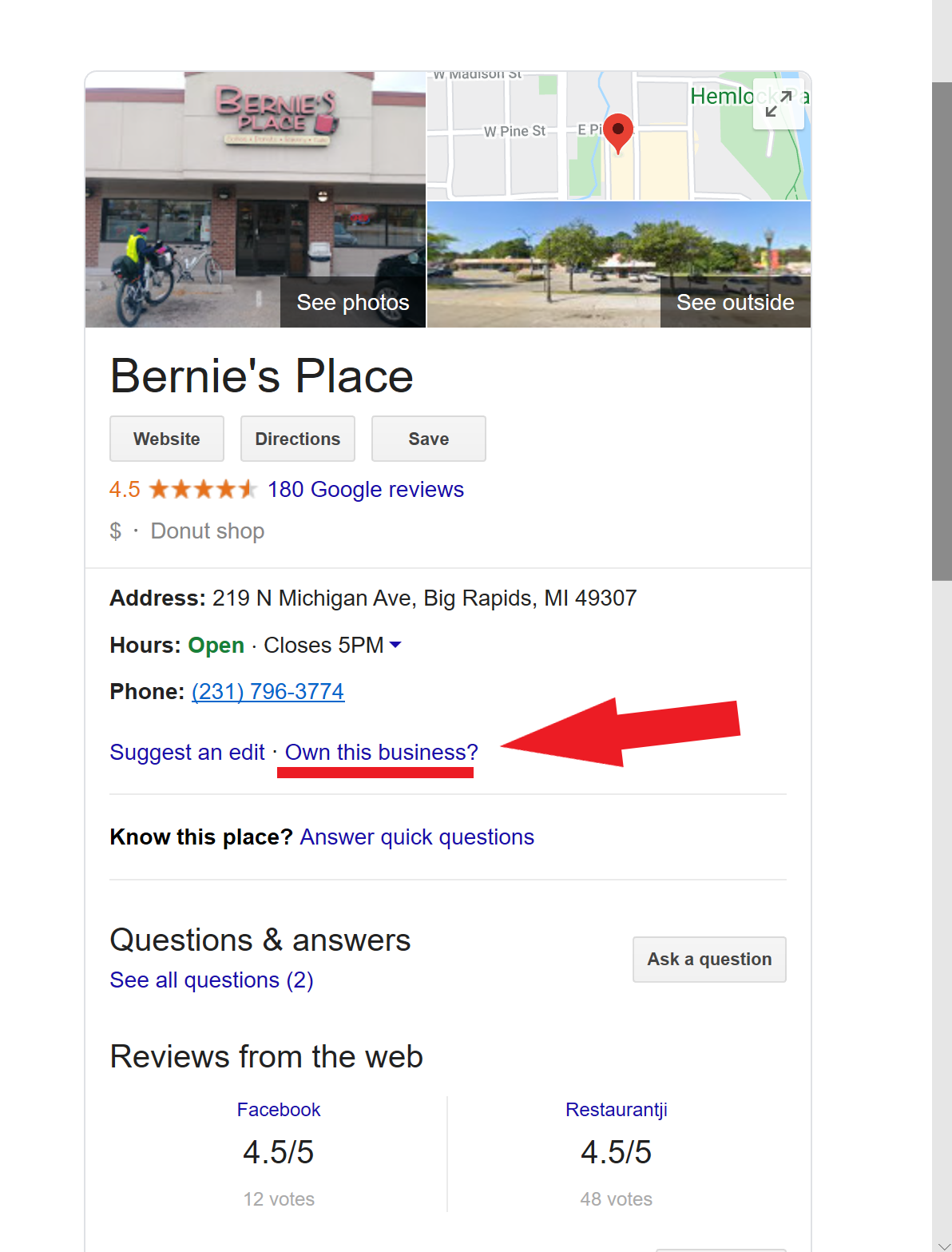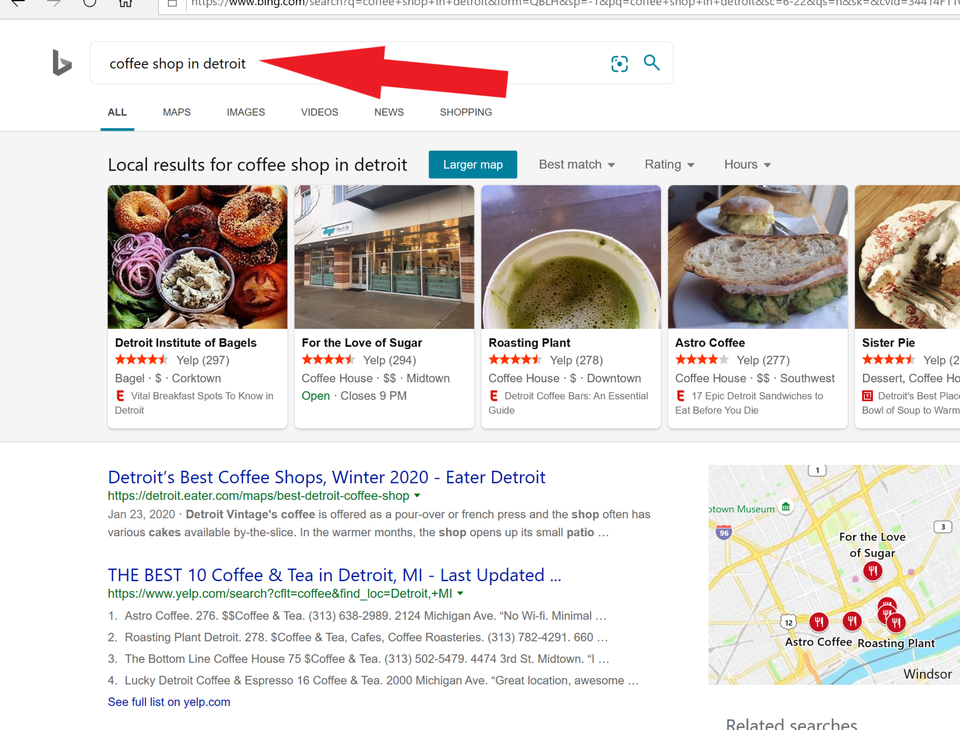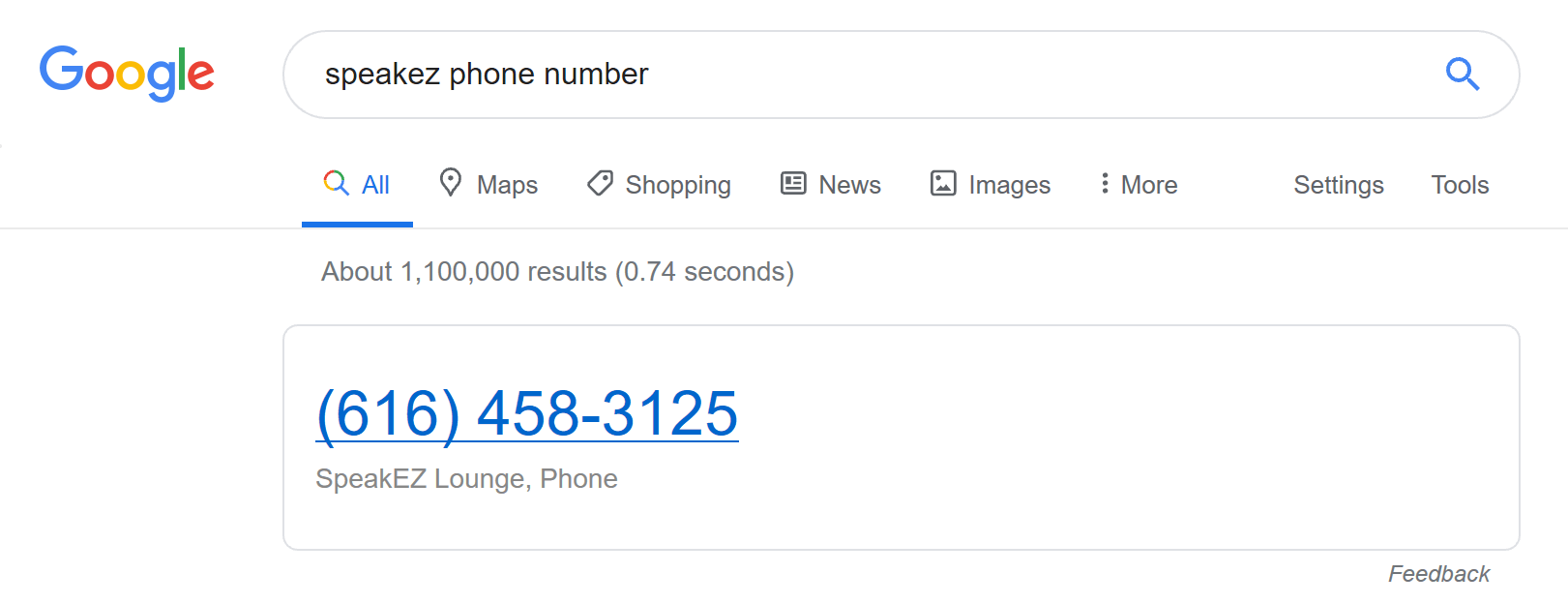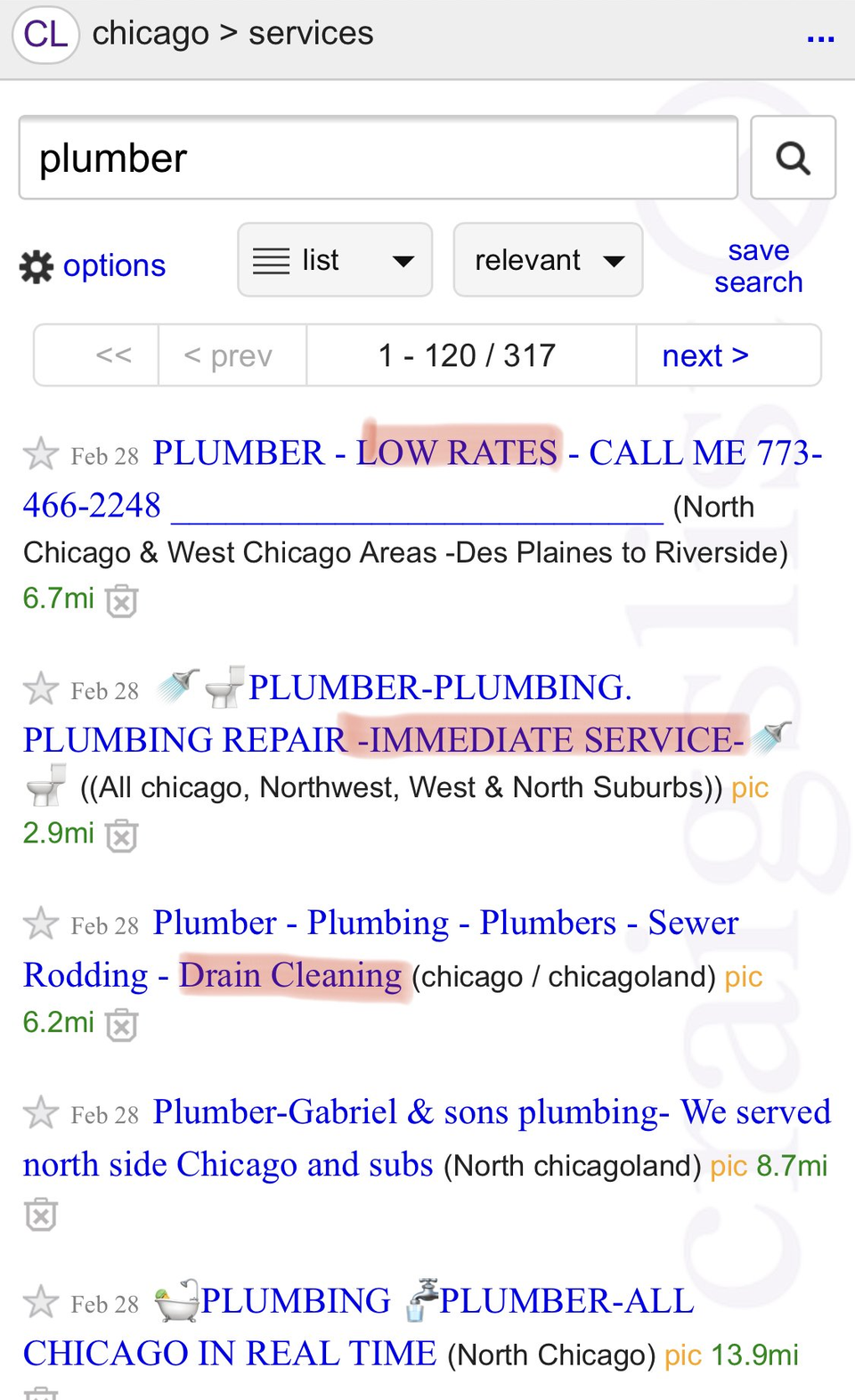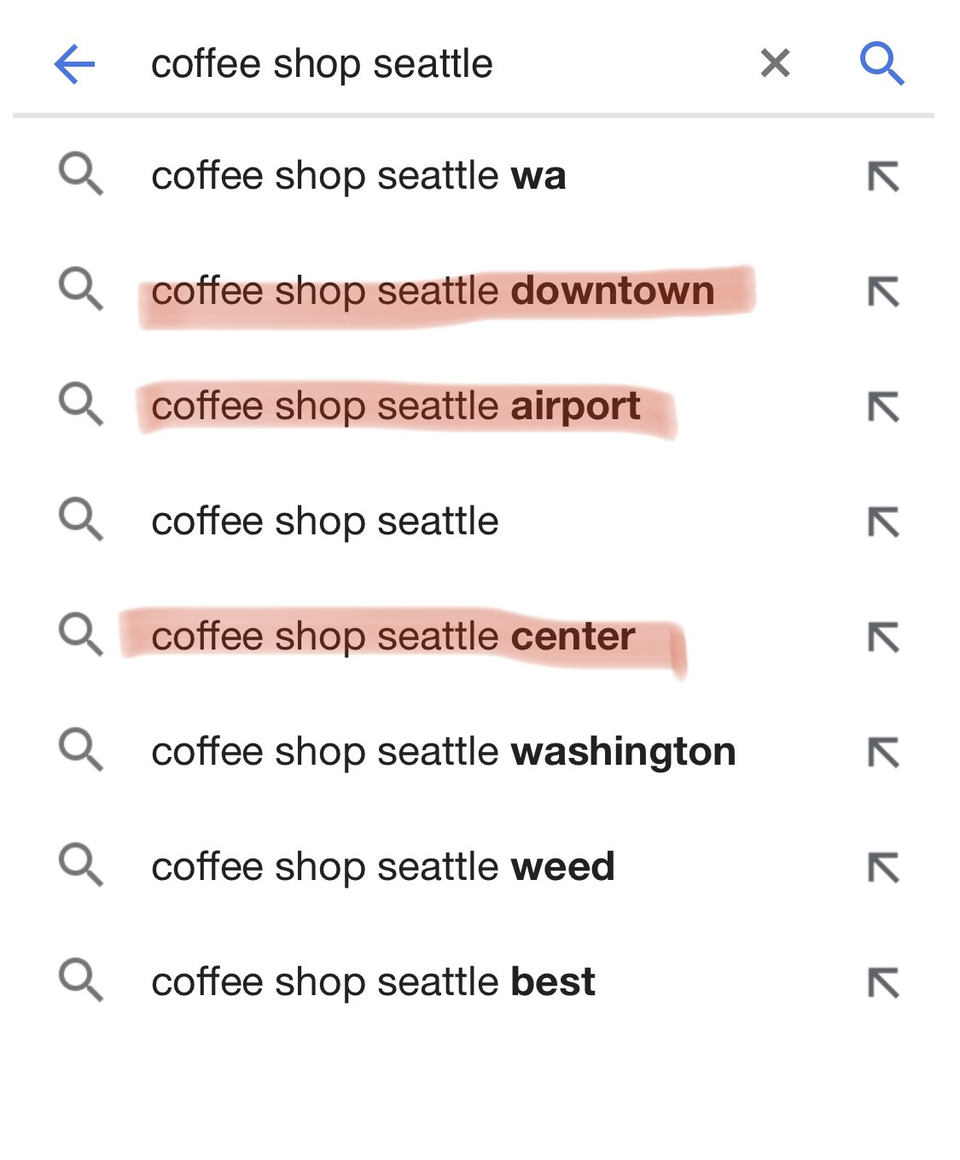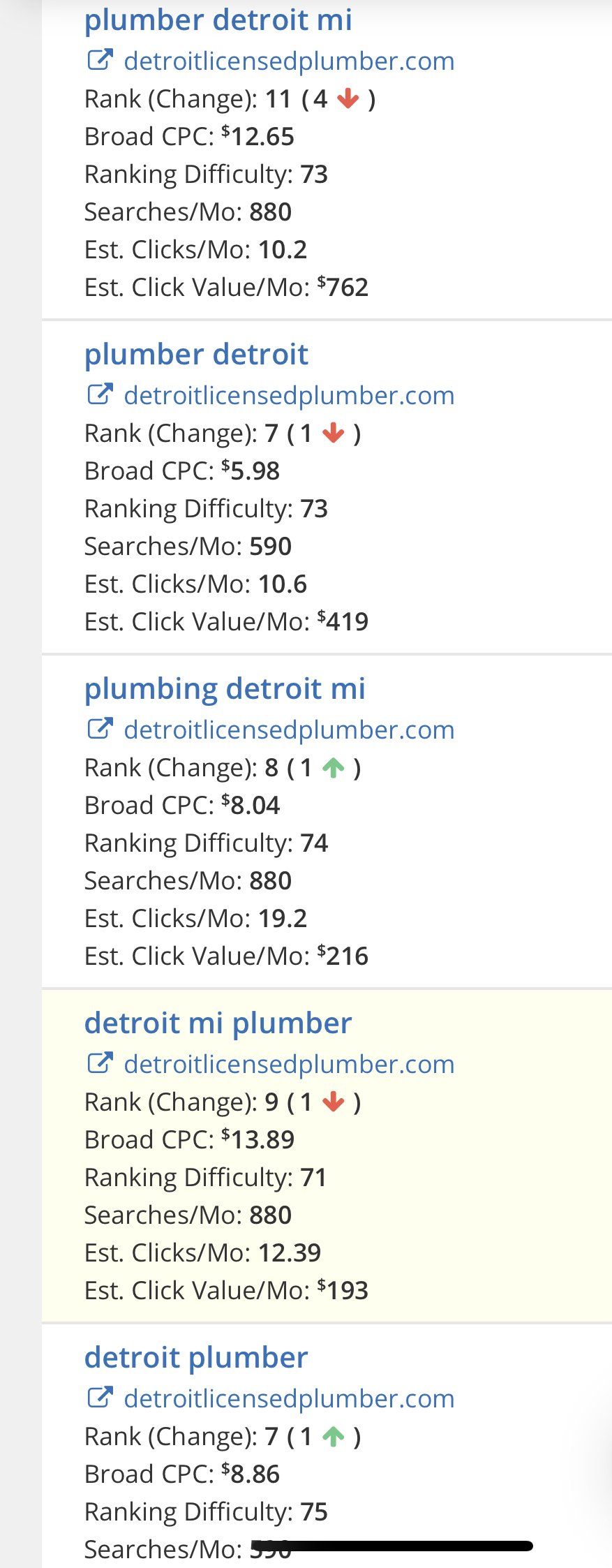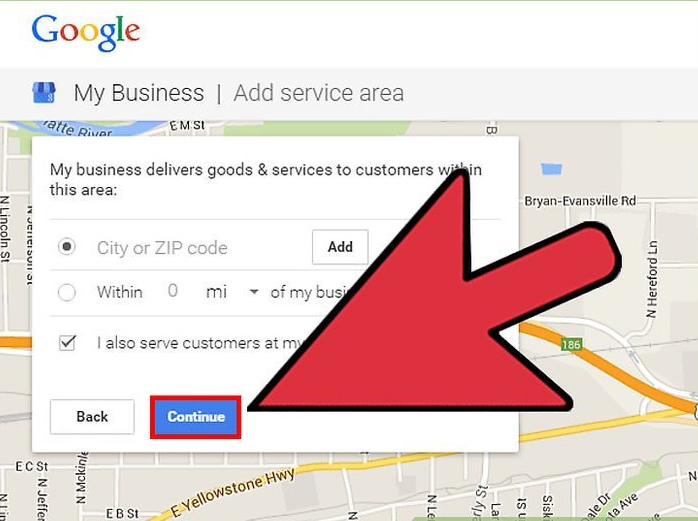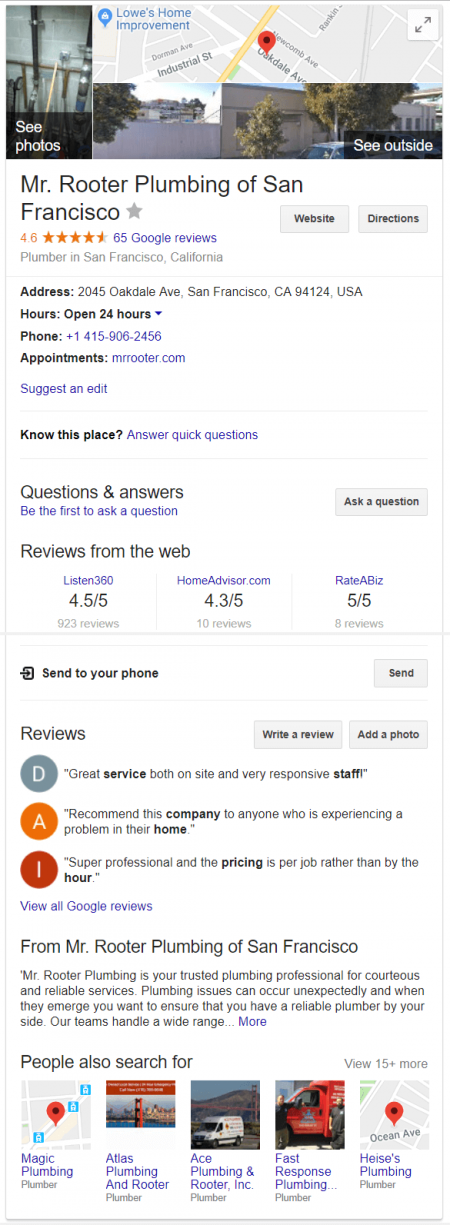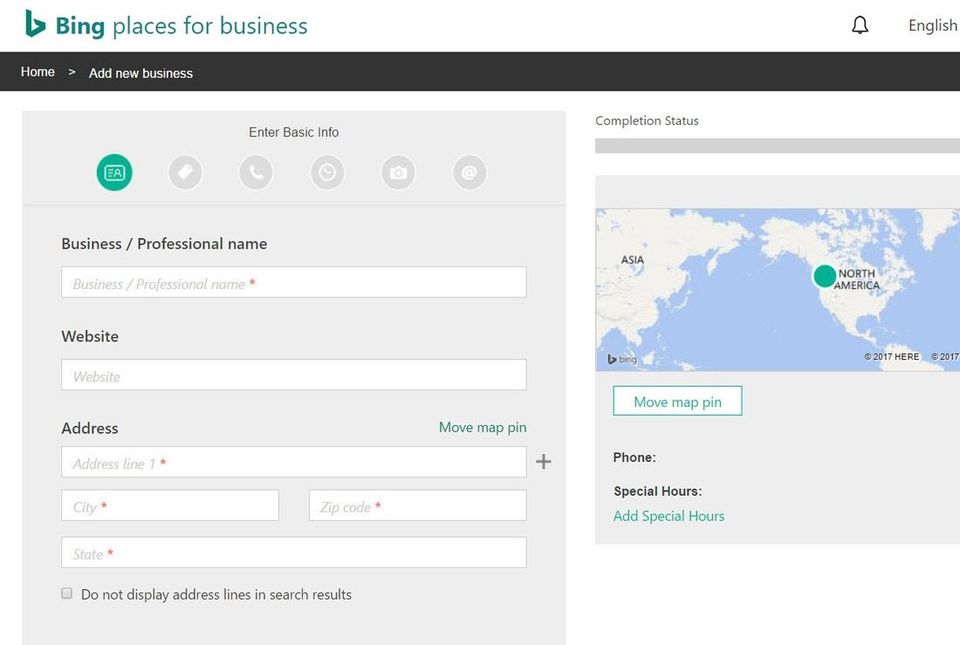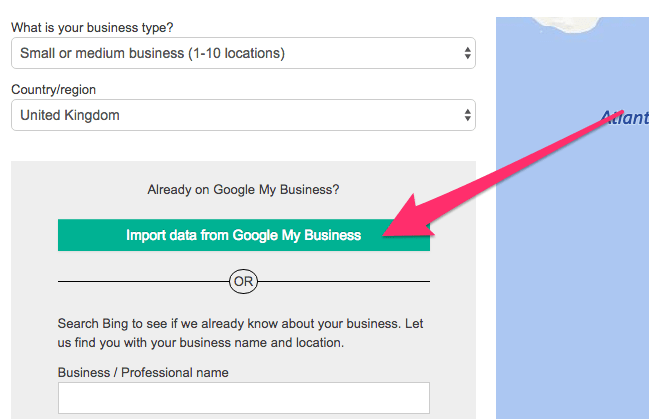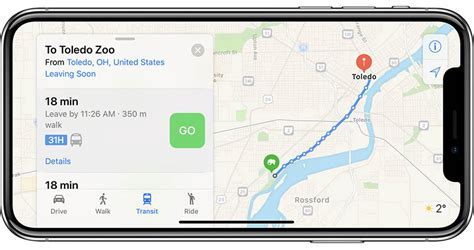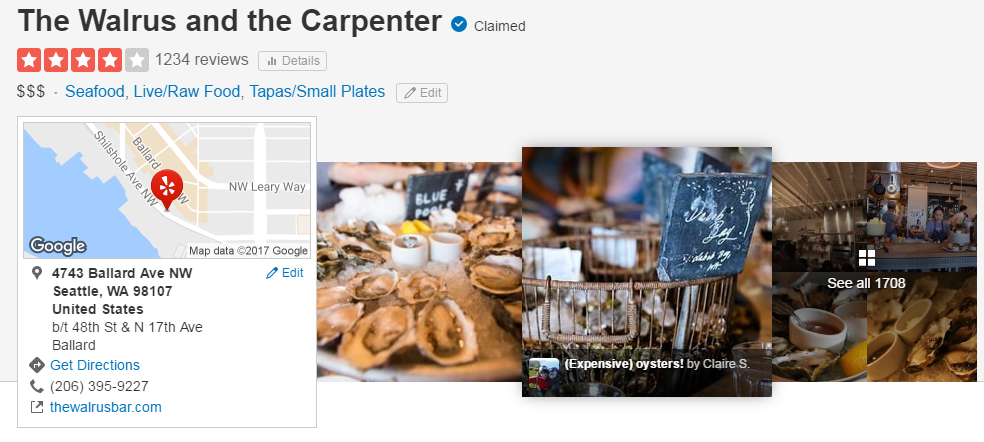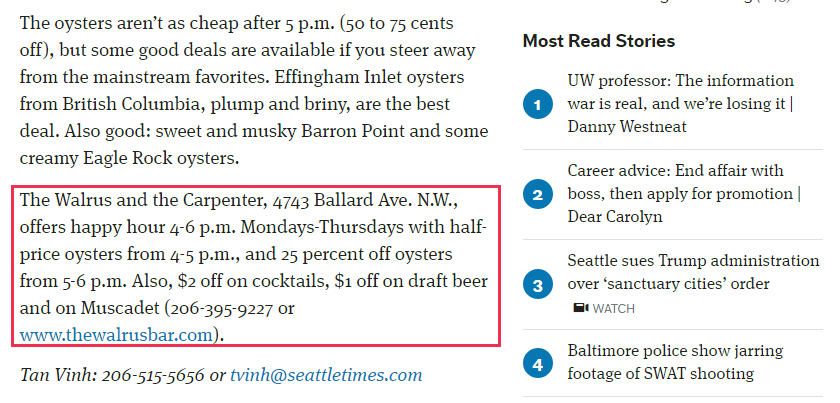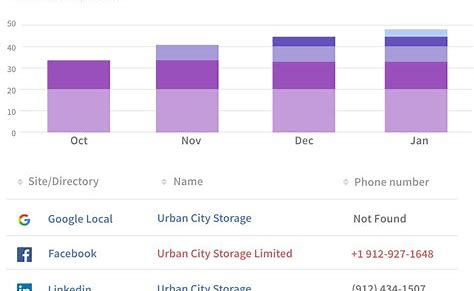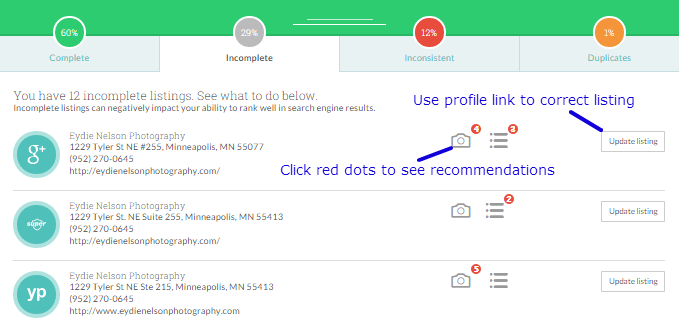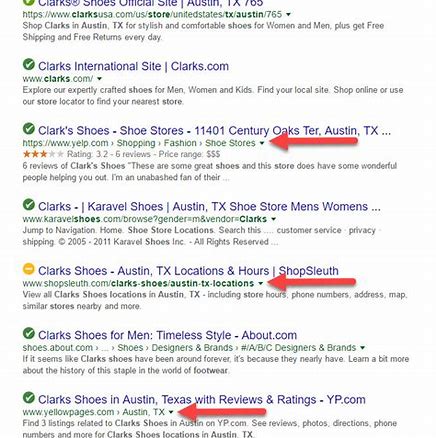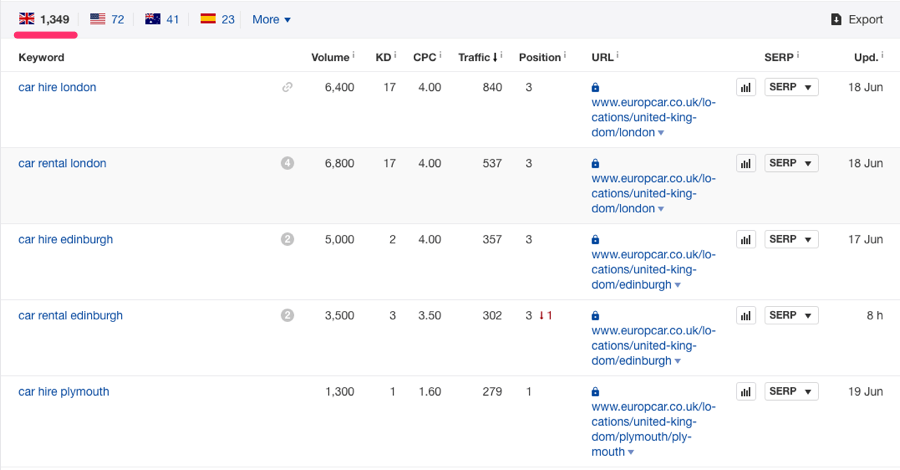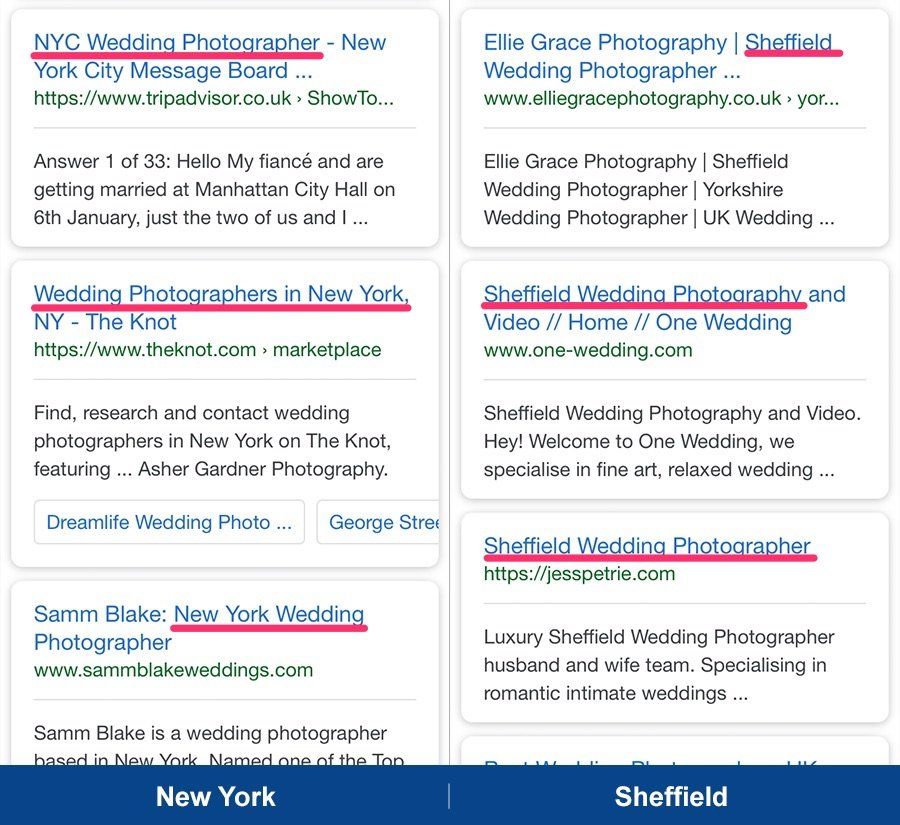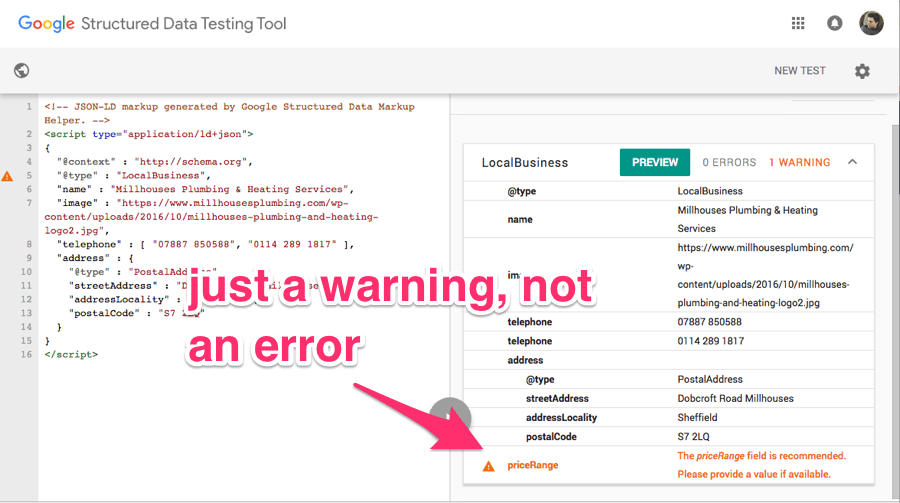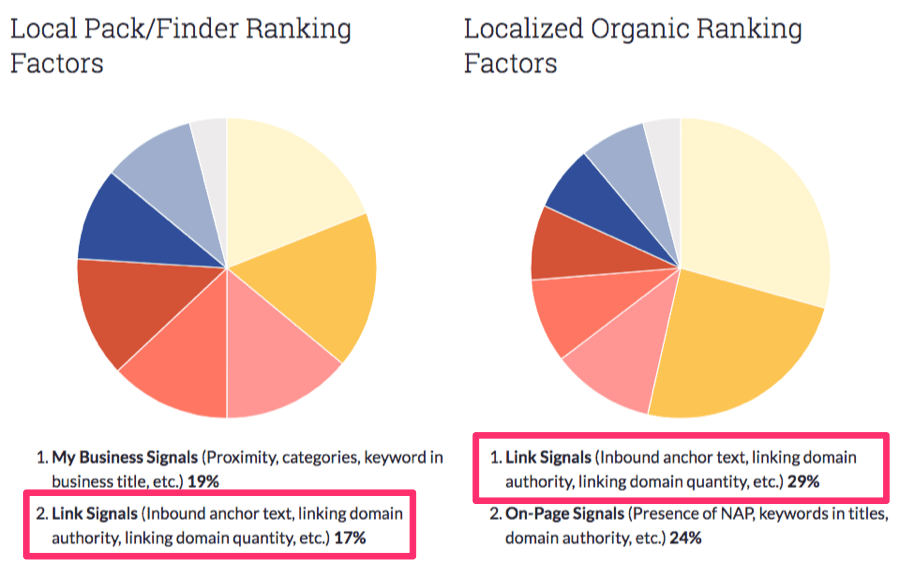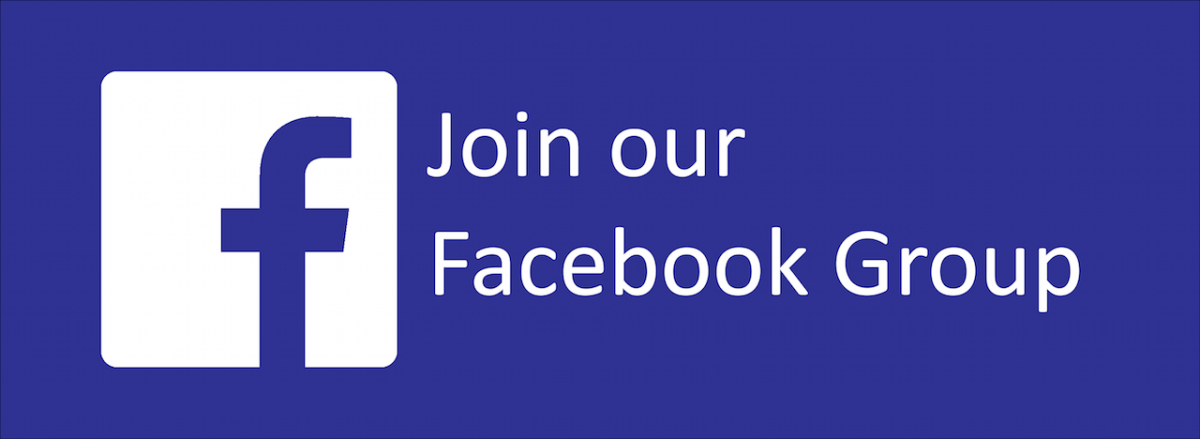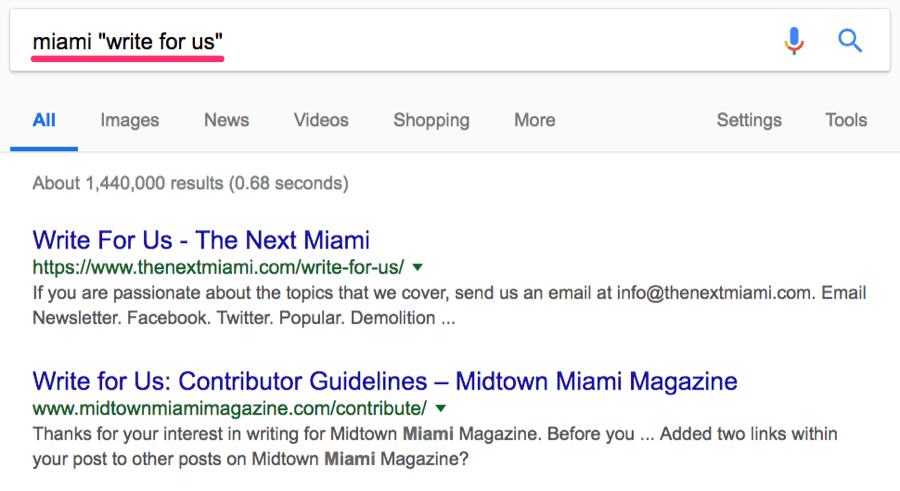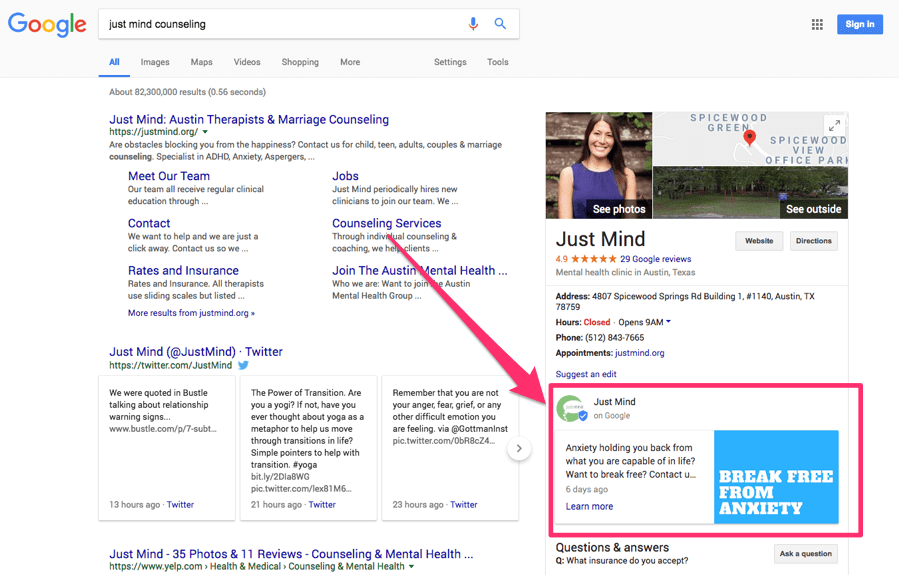
Local Seo: Guide
A Complete Guide to Local SEO The Number One Rated SEO Guidebook
Simple and Knowledge Packed
Would you like to rank your nearby business in Google, Bing, Apple Maps, and other neighborhood web indexes? You've come to the prime spot, to learn just what it takes to rank in your local search engine.
Are You Aware?
46% of all Google searches are localized. However 56% of neighborhood retailers have yet to even claim their Google My Business listing.
For those of you that are uninformed, asserting, optimizing and streamlining your Google My Business listing is the foundation of local SEO. A whopping 56% of local businesses have yet to lay claim to their GMB listing.
However, while asserting your Google My Business listing is a decent beginning stage, there's substantially more to optimizing your business for local SEO enhancement than that.
This 6‑part significant guide breaks down Local SEO… through and through.
What Exactly is Local SEO?
Local SEO (Local Search Engine Optimization), is an extraordinary viable approach to showcase and market your local business online, as it helps promote your products and services to nearby clients at the specific time they're searching for them on Google and other search engines. Plain and simple... Local SEO helps by 'advancing' your online presence to draw in more business from relevant local searches. That last point is a significant one—this does not only pertain to Google.
Individuals search for local businesses organizations utilizing different web engines… Google, Bing, Yelp, Apple Maps, and so on.
However, Google has an expected ~87% piece of the pie (in the US). Which implies that a great many people are utilizing Google to search for nearby businesses.
Therefore, majority of this guide will be generally focused on helping you to optimize your local presence on Google.
Let's dive in, and discuss Google.
Google's Local 'Snack Pack' Versus Organic Results
Composing blog entries is hard… I need an espresso. Here are the search results for "coffee shops close to me"…
Notice that there are two unmistakable arrangements of query items:
The "snack pack" results"
The "organic" normal results
I'm certain the greater part of you know about customary ol' Google search results.
Be that as it may, but what in the heck are "snack pack" results?
Google Snack Pack is the block of three business listings that appear in a boxed area below the map in the results displayed after a Google search with local intent. The Snack Pack shows the top 3 nearby business listings most relevant to the search enquiry. (Source)
Studies have indicated that, 33% of clicks go to the local "snack pack" results, and roughly 40% turning to the normal organic results.
Key takeaway: it pays to rank in both, which is where local SEO takes place. Before We Begin…
First of all…
You have to get the rudiments right.
That implies ensuring that your site is optimized for mobile guests, as 61% of mobile searchers are more inclined to contact a nearby business if they have a mobile friendly site.
Utilize Google's Mobile Friendly Test tool to check this.
You likewise need to ensure that your site doesn't look like all out trash. It doesn't make a difference where you rank, no one is going to reach out when you have a site that is appalling.
Part 1. Keyword Research
Suppose that you run a neighborhood coffee shop— and it's called The Edge.
You would undoubtedly want to see your business in searches like:
- "coffee shop's close to me";
- "The Edge";
- "what time does The Edge close?;
- "how long will it take to walk to The Edge?";
- "what is The Edge's phone number";
Be that as it may, these aren't traditional inquiries, since Google shows this data in card-like results in the SERPs.
Here's a model for a bar close to me:
Google pulls such data from Google My Business listings.
(More on that in the following section.)
Be that as it may, shouldn't something be said about the more "customary or traditional" keywords? How would you discover what they are and what you ought to optimizing your site for?
Here are a couple of strategies:
1.1. Conceptualize Your SiLs ("Service in Locations")
You don't need to be Albert Einstein to perform local keyword research. For most businesses, the essential key words and catchphrases to target will be very self-evident. Suppose that you're a handyman in Detroit—how would you figure individuals will look for your services or products?
They'll presumably go to Google and type something like:
- "handyman in Detroit";
- "emergency handyman in Detroit";
- "fix and repair in " Detroit"
Were you able to recognize the format? It's Service in Location (SiL).
Doing this is simple. Simply make a rundown of the considerable number of services you offer and the areas you serve… at that point combine them to make a lot of potential keywords and phrases.
1.2. Search for Keyword Ideas on Craigslist
Craigslist's can be a goldmine with regards to discovering neighborhood catchphrase and keyword ideas. Simply go to their services segment, select your area and enter a keyword.
In this model I will search for "Plumber" in Chicago.
Immediately, a lot of watchwords stick out—
- "low rates";
- "immediate service";
- "drain cleaning";
1.3. Google Autocomplete
Next up—use Google Autocomplete to create more inquiry recommendations.
This is simple. Simply enter your essential keyword into Google and observe and take note of the suggested searches.
How about we do it for "coffee shop Seattle."
There's some fascinating proposals here—I didn't consider "airport" and "center" during my initial visualization of areas. Make a note of any that to appear to be significant. You would then be able to do this process again this procedure for different areas or catchphrase varieties you have.
1.4. See What Keywords Your Rivals Rank For
Google is truly adept at understanding search intent, which is presumably why the normal #1 positioning page will likewise rank in the top10 for about 1,000 other applicable keywords.
For instance, when I take a peek a Organic keywords report for a local Detroit handymen site, I can see that they rank in the top 10 for a lot of related terms.
Taking a gander at the these keywords and catchphrases for your rivals will reveal other significant long-tail and related searches.
Part 2. Google My Business, Bing Spots, and Apple Listings
Guaranteeing and enhancing your Google My Business listing is undoubtedly the most significant part of optimizing your site to local SEO, however Bing Places and Apple Maps postings are significant as well.
Setting these up isn't excessively troublesome—you simply adhere to the directions offered by Google/Bing/Apple.
2.1. Google My Business
Google My Business is a free and simple tool to utlize for businesses and associations to track their online presence across Google, including Search and Maps.
Recently known as Google Local, and for a time, even Google+ Nearby, Google My Business (GMB) is, as the name proposes, your business profile on Google.
It feeds data to an assortment of places, including the local pack and Google Maps search results, but the most familiar appearance will likely be when it’s in the top right (or top on mobile) of a marked search for your business, as below.
This is what’s known as the Knowledge Panel. Your GMB profile can incorporate a large group of data presented without anyone else, for example, administrations you offer, contact subtleties, business portrayal, classification, and opening occasions however note that highlights, for example, GMB qualities, GMB Q&As, and Google Surveys are for the most part created by customers, with experience of your business.
A big part of local SEO is keeping your GMB profile as up-to-date and accurate as expected, so that it has a higher chance of appearing reliable, alluring, and in the local pack warranting a audience to clickthrough. Despite the fact that GMB is powerful like the Hulk, Google My Business is just one example of what’s known as a ‘citation’.
More about citations later....
2.2 Bing Places
Next up—Bing Places.
This is basically Bing's version of Google My Business. Is it as significant as GMB? Actually no, not in the least. Bing just has a 7.81% piece of the pie in the US. Which implies it's around 1/10th as significant as finishing your GMB profile. In any case, as it just takes a couple of moments to set up your profile, it could be helpful on your path to local SEO.
What's more, as you'll find in a minute, there's an explanation as to why it pays to finish your GMB profile first.
Stage 0. Find Out If You Are Already Listed!
First up—ensure your business isn't as of now recorded on Bing maps.
(I must pressure the significance of doing this.)
To do this, go to Bing Maps and begin entering your business name in the search bar. In case you're as of now listed, you should see your business show up in the live query items.
We should attempt this for Anthology's Coffee—a unique coffee shop located in good old Detroit.
Looks like they are already listed.
In the event that you discover this is the situation for your business, at that point hit the "Is this your business?" link in the base of the posting. (Indeed, they couldn't have made this any smaller!)
You will at that point be diverted to a page where you can guarantee/include your business—it will be somewhat pre-filled.
Stage 1. Select Business Type
Next up—select your business type and area.
Here are your decisions for business type:
- Little of medium business (1–10 locations)
- Chain business (in excess of 10 locations)
- Online business (no physical locations)
- I oversee professional resources for my customer's benefit
With the end goal of this guide, I'll expect that you're a private venture with 1–10 areas.
On the off chance that you do maintain a chain business, hit choice #2—Bing will walk you through what you have to do.
SIDENOTE: Online organizations (choice #3) aren't qualified for Bing Spots postings, so you're in a tough situation on the off chance that you fall under that section. Be that as it may, of course, for what reason would you say you are perusing this guide in case you're not maintaining a nearby business!?
So we should hit choice #1.
Now something enchanting will occur—there will be an alternative to import information from Google My Business.
If you're as of now checked on GMB, do this. In addition to the fact that it is a help, however it will likewise decrease the likelihood of mix-ups.
If not, enter your business name and area (I highly recommend entering a Zip Code) as ordinary.
Bing will at that point look for your business. Be that as it may, as we previously checked this in step #0, it shouldn't discover it. So hit the "Make new business" button.
Stage 2. Enter Your Essential Data
Presently you should enter your business name, address, site, and so forth.
Sidenote.If you imported your information through Google My Business, this should as of now be accomplished for you.
Likewise with the Google My Business listing, you should use the copy & paste method with the information from your spreadsheet to guarantee that it stays accurate with different postings.
There's additionally the alternative to conceal your location from the inquiry results.
You should mark this box on the off chance that you telecommute or utilize a virtual office.
Stage 3. Pick a Business Section and Classification
First of all, in case you're a "medicinal services proficient or specialist," mark the unique box—that you accomplished previously for the "business segment" part.
Otherwise, hit the "browse" button and choose one of the 11 accessible business sections. Select "I don't know" in the case you're uncertain.
At that point pick the classification/classes that your business falls into.
Bing's rundown isn't as broad as Google's. In any case, in contrast to Google, you can pick numerous classifications (up to 10) here and
afterward select an "primary" classification later.
I suggest hitting "search" to raise a modular window, at that point scanning for a fitting business classification there. It shows classes and subcategories in an increasingly consistent manner.
Don't go insane here. Because you can choose 10 doesn't imply that you should—simply pick the ones that are genuinely suitable for your business. This is generally a couple of classes, in my experience.
You would then be able to choose an primary classification from the classes you selected.
Finally, include a short portrayal for your business—sprinkle your keywords all through, yet don't try too hard ( don't overdo it).
Stage 4. Include Telephone, Site, Twitter, Facebook, Yelp and TripAdvisor Links
Copy & Paste in your telephone number from your spreadsheet—once more, this guarantees things remain accurate.
Bing likewise shows social profile interfaces in their Insight Diagram board (or whatever Bing calls it) when individuals scan for your business.
Stage 5. Include Photographs
This should be self explanatory. Be sure to check guidelines for photos on different search engines your posting to.
3.3. Apple Maps
Did You Know?
Apple's iPhone has a 32.9% piece of the overall industry in the US—that is ⅓ of all cell phone clients, or a huge number of individuals.
Presently, in case you're in any way similar to me, you most likely use Google Maps over Apple Maps.
In any case, there are two significant things to remember:
A great many iOS clients despite everything use Apple Maps, as it's the default maps application on iPhone. Apple is quite clandestine, so I was unable to discover any forward-thinking details on the quantity of iOS clients who use Apple Maps. However, as it's the default maps application on iPhone, I'd be happy to wager that it's most of iOS clients, which is a huge number of individuals.
Apple Maps is incorporated with Siri and Spotlight searches. Ask Siri for help with directions and Apple Maps will open. Most recent details show Siri is effectively utilized on the greater part a billion gadgets. That is many individuals!
Bottomline: if in fact you are reading this because you are hoping to improve your local SEO, you should optimize and utilize your Apple Maps listing.
Part 3. Local Citations (NAP)
Citations are online notices of your business, which for the most part show your business name, address, and telephone number—all in all known as NAP (Name, Address, Telephone).
There are two primary kinds of citations: structured and unstructured.
Here's a case of an organized citation:
Basically, structured citations are those where NAP data is exhibited in an outwardly organized way. These are normally seen on professional references, social profiles, and so on.
Here's an unstructured citation:
Unstructured Citations are notices of your business that in an unstructured arrangement. These generally appear in blog entries, on business blogs sites, on News websites, and so on.
So you may be wondering why are NAP citations so important?
Here are two reasons why consisitent and accurate NAP citations significant:
- As indicated by Moz, citation signals are one of the top local ranking factors. This is valid for both Google's "snack pack" results and organic results. Doubtlessly, this is on the grounds that consistent NAP data over the web serves to additionally check the information Google has on document (GMB) for a specific business. Conflicting NAP data, then again, serves just to confound, deceive and mislead both Google and potential clients. This prompts a poor client experience—not something Google is an enthusiast of.
- Google isn't the main spot individuals look for organizations. They additionally search by means of Facebook, indexes, and so forth. Having a precise NAP listed on those websites will permit potential clients to discover your business, which converts into more clients and income.
So with regards to local SEO:
- Ensure existing citations are right and also don't lack consistency.
- Create more relevant and consistent citations.
We should investigate how to do that.
Do a Citation Audit
Most organizations will already have citations listed.
However, a good probable portion of these will be off base as well as inadequate.
Some will have the right business name and address, yet an inappropriate telephone number. Others will have the right business name and telephone number, however an old location. Furthermore, some may have halfway data—e.g., business name, address, however no telephone number by any means.
Here are a couple of approaches to discover conflicting, inadequate, and duplicate NAP citations:
Moz Local:
Moz will check the principle information aggregators in your nation and reveal any inadequate, conflicting, and copy postings.
To fix these, navigate through, and claim the listing, at that point update the information with the accurate and precise information from your spreadsheet.
Check the Huge Aggregators/Providers
Most littler indexes acquire your organizations NAP data from information aggregators/providers.
Here are the huge ones:
- Infogroup/InfoUSA—update/check your information with their Express Update administration
- Truthful—utilize their information review device to check and update your present posting
- Acxiom—use mybusinesslistingmanager.myacxiom.com to refresh/guarantee your posting
- Thomson Nearby—utilize their free posting administration to include your business
- Neustar Localeze—scan their catalog for your business, at that point solicitation to deal with the posting on the off chance that you haven't done so as of now.
Checking your postings on these locales permits you to possibly refresh several conflicting/incorrect NAP citations in a single swoop.
Manual NAP Citation Audit
Fixing any issues with the significant information aggregators won't tidy up all citations. You will more likely than not still have some conflicting, off base or deficient information out there.
The best way to tidy up this information is to play out a manual citation audit and cleanup.
The fundamental procedure for this is to utilize Google to search and find citations with what's known as advanced search operators. Here are a couple of you can use:
To find incomplete NAP citations:
- "Business name" + "partial address" - "right telephone number"
- "Business name" + "right telephone number" - "partial address"
- "Right telephone number" + "partial address" - "business name"
To discover mistaken NAP citations:
- "Business name" + "partial address" +"old/off base telephone number"
- "Business name" + "right telephone number" + "old/mistaken incomplete address"
- "Right telephone number" + "right partial address" + "old business name"
3.2 Construct More Citations
Since you've found and fixed existing citations, it's a great opportunity to produce considerably more. I highly recommend beginning with some core structured citations.
Other neighborhood business affiliations and indexes (e.g., local networking events).Likewise, there are applicable industry-explicit citations, for example:
- TripAdvisor (for cafés, lodgings, and so on.)
- FindLaw.com (for lawyers)
- HealthGrades.com (for specialists)
- HomeAdvisor.com (for handymen, tradespeople, and so forth.)
Fundamentally, simply search for any online publications that identify with your industry.
Part 4. On-Page SEO
Many "customary" on-page SEO factors apply here, like:
- Keyword in H1
- Keyword in title tag
- Keyword in URL
- Straightforward URLs
- Tempting meta descriptions
However, there are a couple of different things to keep when attempting to rank locally, such as showing NAP data and including applicable schema markup.
There are additionally contrasts in approach contingent upon the quantity of areas you serve.
So how about we dive deeper into the two bases…
4.1. Set Up Your Site Structure to Rank Local Landing Pages
On the off chance that you serve numerous regions/urban communities and need to rank in every one of those areas, you have to set up local landing pages.
Here's the structure I would suggest:
- yourlocalbusiness.com/area‑1/
- yourlocalbusiness.com/area‑2/
- yourlocalbusiness.com/area‑3/
Additionally, DON'T
make duplicate or various landing pages for the same location, however targeting marginally various terms. This won't help you to rank.
Essentially, Google now and again settles on the choice that the homepage should rank, instead of the individual landing pages. All in all, no mischief done, correct?
Not exactly. The drawback of this, is that so called "link equity" is pointlessly conveyed over different pages. In plain English, this implies the homepage could be more strong and conceivably rank higher.
Bottomline? This is terrible practice and you ought to abstain from doing it
4.2 Improve/Optimize Your Homepage
Most organizations ought to improve their homepage around their primary area.
For instance, a Grand Rapids-based wedding photographer ought to optimize their homepage for terms like "Grand Rapids wedding photographer" and so forth.
I recognize what you might be thinking…
"[… ] yet I do weddings all over MI and the USA; I would prefer not to limit myself to [location]"
Reasonable point. So you should forget about the area references and simply improve for "wedding picture taker", isn't that so? All things considered, that has 45x all the more month to month searches.
This is a poorly conceived notion. Here's the reason…
Google "wedding photographer" and I ensure that the vast majority of the outcomes will be location specific.
In spite of not adding an area modifier to your pursuit, Google despite everything shows localized results. This is on the grounds that they're able to surmise your location from things like GPS (on mobile), your IP, and so forth. They know where you are, so they adequately simply include the neighborhood modifier for you in the background.
So, in short you may as well optimize your homepage for location.
Here are a couple of pointers:
- Show NAP data (include this in the footer, except if you have local landing pages for other physical areas)
- Insert a Google Map displaying your address (discretionary — however enables clients to see/find where you are)
- Show reviews/surveys/and so on.
- Include applicable schema markup.
4.3. Improve/Optimize Your Local Landing Pages
Your local landing pages ought to be optimized around singular areas of service.
Suppose that you're a Detroit-based wedding picture taker serving two different areas: Grand Rapids, and Upper Peninsula. You may have the accompanying local landing pages:
- greatweddingphotography.com/grand-rapids
- greatweddingphotography.com/upper-peninsula
Here are a couple of extra considerations explicit for local landing pages:
- Opening times;
- Local NAP (in the event that you have a genuine nearby nearness);
- Related keywords, sprinkled all through
4.4. Add Schema Markup to Your Pages
Schema truly isn't that complicated. One doesn't need to be a rocket scientist.
It's simply some extra code that gives Google additional data about your business/site, and encourages them to all the more likely comprehend the information being shown on your site.
You don't need to be a specialized wizard to execute it either. Google's Structured Markup Helper does a large portion of the work for you.
Simply mark the "local business" checkbox, glue in one of your pages, at that point hit "start tagging."
Your page will than upload in a visual manager. Including schema.org markup is as straightforward as right-clicking any suitable on-page components and picking important markup things from a rundown.
How about we start with NAP data. So Business Name…
Address...
Phone Number.....
You can likewise include markup for opening times and a lot of other stuff. In the event that you need to include cell/portable numbers, simply utilize the phone markup twice—this is impeccably alright to do.
When doing this please note this data should coordinate with your Google My Business information as to the best knowledge.
At the point when your finished, click "create HTML" and select the JSON-LD format.
You will see a code bit like this:
<!-- JSON-LD markup generated by Google Structured Data Markup Helper. -->
<script type="application/ld+json">
{
"@context" : "http://schema.org",
"@type" : "LocalBusiness",
"name" : "Millhouses Plumbing & Heating Services",
"image" : "https://www.millhousesplumbing.com/wp-content/uploads/2016/10/millhouses-plumbing-and-heating-logo2.jpg",
"telephone" : [ "07887 850588", "0114 289 1817" ],
"address" : {
"@type" : "PostalAddress",
"streetAddress" : "Dobcroft Road Millhouses",
"addressLocality" : "Sheffield",
"postalCode" : "S7 2LQ"
}
}
</script>
You would then be able to test the code utilizing Google's Structured Data Testing tool.
Simply copy and paste and it will feature any mistakes.
Fix any blunders, at that point copy and paste the code into the header segment of your website.If you have numerous physical areas (various locations, telephone numbers, and so on.), you should follow this whole procedure for every single local landing page.
Part 5. Link Building (for Local Sites)
As indicated by Moz's 2017 review, "link signals" are the most significant ranking factor for local organic results.
For the local "snack pack," they're the second most significant factor.
You ought to have just assembled a base arrangement of links when building local NAP citations. (Most directory sites let you connect to your site.)
Be that as it may, tragically, a significant number of these will be no-follow.
So here are a couple of approaches to construct links to neighborhood business sites…
5.1. Make and Advance a Useful Local Resource
Nothing will assist you with winning over potential clients all the more truly helping them.
How about we assume that you're a Plumber in Detroit, MI.
Your objective market is Detroit society. What sort of asset would be really valuable to those individuals AND prone to pull in joins?
Here are a few thoughts:
- A Manual for Plant Care (for Detroit People)— It isn't absolutely plumbing-related, yet I'm certain a manual for plant care for Detroit would be both educational and valuable. Provided that this is true, this could (possibly) make an incredible bit of linkbait.
I'm not saying this thought is extraordinary (that was simply at the top of my list), however ideally you get the thought.
In case you're not feeling so inventive, here are a couple more thoughts that will in general progress admirably:
- Nearby "best of" guides—Make a rundown of the best eateries, bars, distilleries, attractions, activities, and so on in the zone.
- Neighborhood Calendars—Make a nearby schedule, highlighting the most outstanding occasions over various classes occuring in the following barely any months.
Once made, it's only an instance of promoting it.
Facebook groups, are an extraordinary spot to begin.
Simply make a point to clear it with the administrators first!
5.2. Guest/Visitor Blogging
Visitor blogging is as yet an incredible method to build high quality links.
Simply don't do it exclusively for the links. Do it for the introduction it can produce for your business.
In 2020, it's more about quality than quantity—you ought to compose for sites that can possibly send targeted referral traffic to your site.
For local organizations, this will for the most part be either:
- Nearby online blogs and publications;
- Industry-explicit web blogs
Discovering local blogs is as straightforward as Googling things like:
- [location] intitle:"write for us";
- [location] intitle:"write for me";
- [location] "compose for us";
- [location] "visitor post"
This is what it may look like for a business situated in Miami:
You can likewise do likewise to discover industry distributions—simply supplant the area with a catchphrase (e.g.. "plumbing" rather than "Miami").
5.4. Take More of Your Competitors Links
Finding and utilizing a Link Intersect tool is valuable for something beyond building citations. Link Intersect is valuable for something beyond building citations.
You can likewise utilize it to discover common links among your rivals.
Link Intersect > enter competing domains > see common links
It's ideal to do with the top-positioning sites for your objective terms (e.g., Detroit handyman), as this ought to reveal needle-moving links.
I would say about 9 out of 10 times, should uncover a lot of directory links.
This is definitely not a terrible thing—it's a decent method to find more NAP citations and nofollow link openings.
In any case, it will likewise reveal forum links, visitor posts, and other one of a kind links.
Part 6. Reviews (and Other Progressing Exercises)
Having a "set it, and overlook it" attitude is the most exceedingly terrible thing you can do with regards to SEO. Local SEO is the same.
Accordingly, there are a couple of continuous exercises you should remember.
6.1. Keep Dynamic on Google My Business
Here are the three most significant progressing errands with GMB:
Respond quickly to client/customer reviews;
Keep an avid eye out for incorrect edits;
Use Google Posts on keep your clients educated
No.1 is really obvious—simply monitor and respond accordingly to reviews (positive and negative) in a timely manner by means of Google My Business.
SIDENOTE:
You ought to do likewise for some other review sites that are vital for your business (e.g., TripAdvisor, for cafés).
In any case, you likewise need to watch out for off base alters to your posting.
Fundamentally, anybody can propose an alter to any Google posting with the "Suggest an edit" button.
Google apparently actualizes a great deal of proposed changes without telling the entrepreneur or approving the data. So it merits giving this a brisk check once every couple of weeks to ensure everything is as yet exact.
Presently we should discuss Google Posts…
Google Posts is a smaller scale blogging stage inside Google My Business. All updates are seen in the Knowledge Panel and on your listing.
Here's an example:
This not only helps to expand your SERP real estate, but it gives a chance to draw in more consideration and overall boost conversions.
A few Studies even show a connection between's "snack pack" rankings and Google Posts activity.
You can make a Google Post from inside Google My Business.
There are a couple of options to choose from, including:
Transfer a picture;
Compose content (up to 300 words)
You can likewise choose the call to action button ("Learn More" "Join," "Get Offer", and so forth.) to include in your post.
I highly recommend all local business mess with this feature and remain dynamic with Google Posts. It doesn't require some investment or exertion to do, so return for capital invested will probably be high.
6.2. Publish New Content Regularly
Blogging consistently completes two things:
- Tells Google (and guests) that your site is effectively kept up;
- Attracts links
In any case, don't blog just for the hell of it—go for quality over quantity.
Simply distributing another post each month or two will be sufficient for most private companies.
Musings
Annnd… Finally!
That's all he wrote folks..
I realize that is a great deal to take in, in any case, truly, follow the guidance above and I ensure you'll be ranking better than 99% of your rivals.
Simply recall that you additionally need to follow and track conversions as well as can be expected. Without tracking your progress, you will do not be able understand if your Local SEO endeavors are really converting into leads, clients, and at last, more income for your business.
Did I miss anything right now? Tell me in the remarks.
Contact Us
© 2022 Targeted Web Traffic Fast. All Rights Reserved.
228 S Warren Ave
Big Rapids
, Mi
49307
SUPPORT EMAIL: Nathan@targetedwebtrafficfast.com
Hours:
Open Mon-Sun 8:30am - 5:30pm
This site is not a part of the Facebook website or Facebook Inc. Additionally, This site is NOT endorsed by Facebook in any way. FACEBOOK is a trademark of FACEBOOK, Inc.
